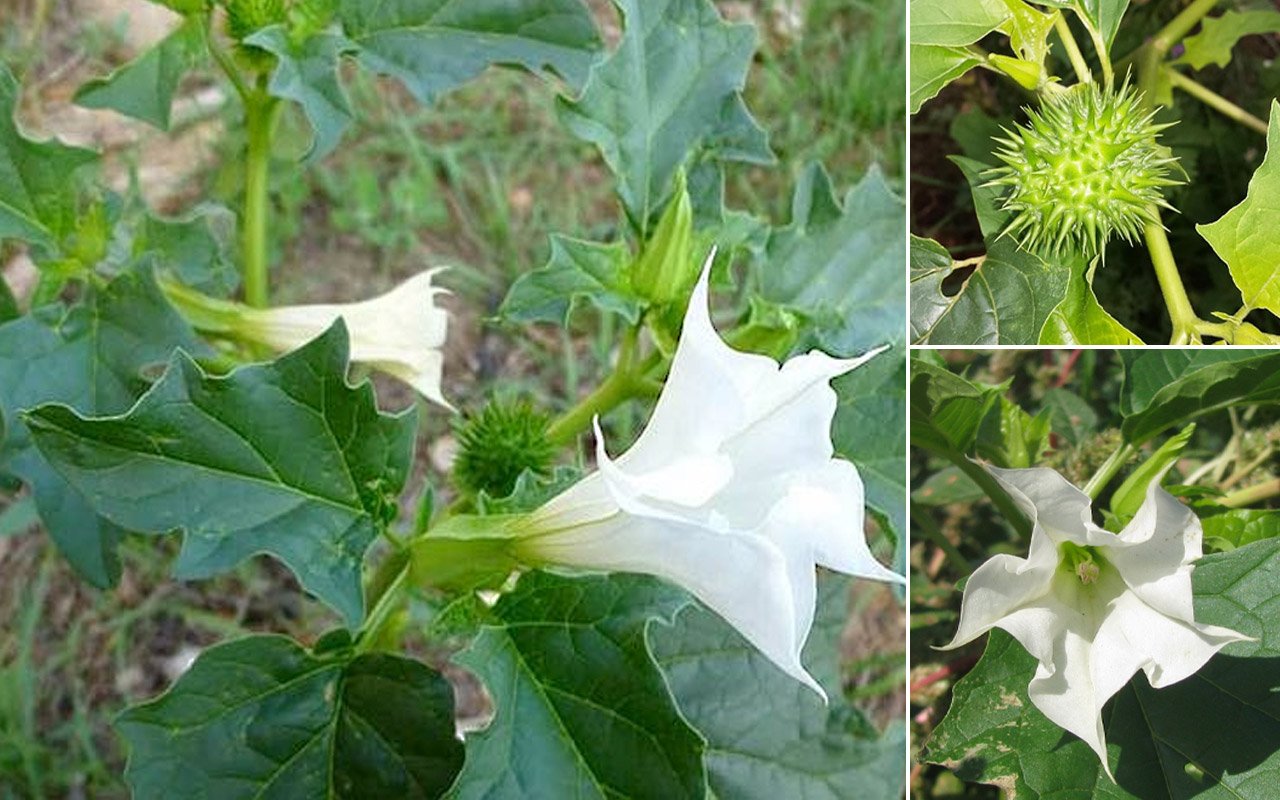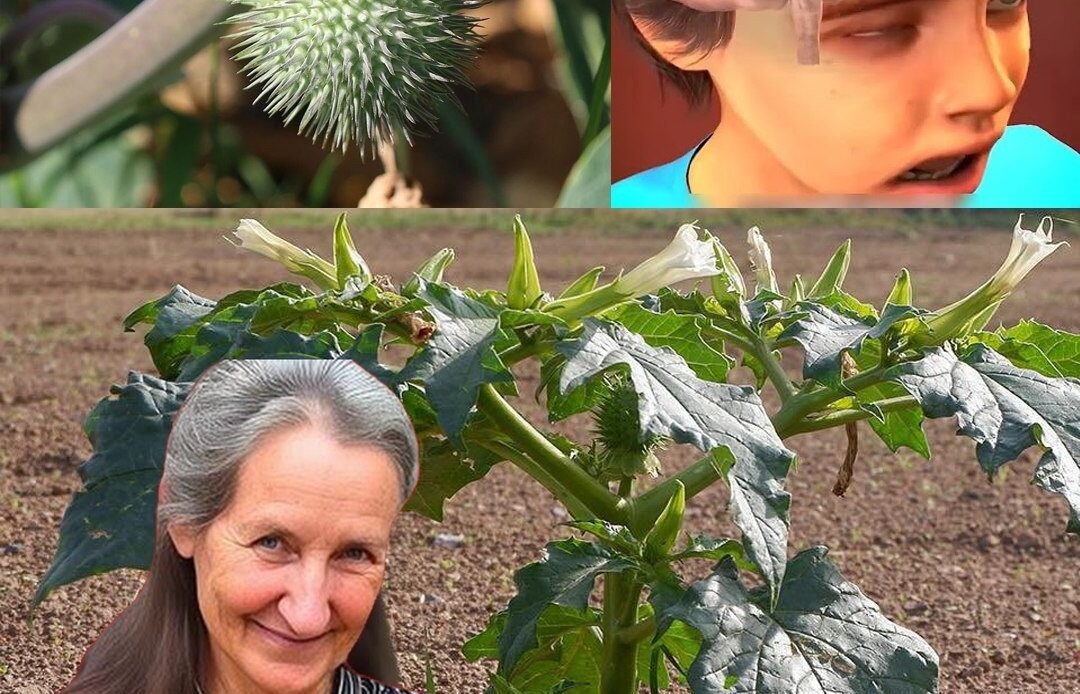Your backyard might be home to a plant that looks completely harmless—maybe even beautiful—but what if it carries hidden dangers that could put your health at risk? Many people unknowingly have toxic or harmful plants growing in their gardens, and while some are mildly irritating, others can be downright dangerous.
If you’re someone who enjoys spending time outdoors, gardening, or simply taking in nature, it’s crucial to know which plants pose a risk. Read on to discover some of the most overlooked yet potentially harmful plants that could be right outside your door.
## **Why Are Some Common Plants Dangerous?**

Plants have evolved to protect themselves from predators, including humans, by producing toxins, irritants, or thorns. While some of these natural defenses are harmless to most people, others can cause allergic reactions, skin irritation, digestive issues, or even poisoning. Many of these plants look completely normal, making them easy to overlook.
## **1. Poison Hemlock – Looks Harmless, But Deadly**
One of the most dangerous plants commonly found in yards and fields is **poison hemlock** (_Conium maculatum_). This plant resembles wild carrot or parsley, making it especially tricky to identify. However, every part of the plant—from its leaves to its seeds—is highly toxic.
### **How It’s Dangerous:**
– Contains **toxic alkaloids** that can cause respiratory failure.
– Even small amounts can lead to **nausea, vomiting, tremors, and paralysis** if ingested.
– Touching it may cause **skin irritation** in some people.
### **Where It Grows:**
– Along roadsides, in gardens, fields, and disturbed soil areas.
– Often mistaken for edible herbs, making it even more dangerous.
### **How to Stay Safe:**
– Never consume wild plants unless you’re 100% certain they’re safe.
– Wear gloves if removing poison hemlock from your yard.
– Teach children to avoid plants they don’t recognize.
## **2. Oleander – A Beautiful but Deadly Shrub**

Oleander (_Nerium oleander_) is a stunning ornamental plant often used for landscaping due to its colorful flowers and ability to thrive in tough conditions. However, what most people don’t realize is that oleander is **one of the most toxic plants in the world**.
### **How It’s Dangerous:**
– Contains compounds that affect the heart, leading to **irregular heartbeats or even cardiac arrest** if consumed.
– Even a small amount—like a single leaf—can be **lethal** to both humans and animals.
– Smoke from burning oleander can also be **toxic** if inhaled.
### **Where It Grows:**
– Commonly found in warm climates as a decorative shrub.
– Often planted in parks, backyards, and along roadsides.
### **How to Stay Safe:**
– Never touch or ingest any part of this plant.
– Keep pets and children away from it.
– If you suspect oleander poisoning, seek **medical help immediately**.
## **3. Deadly Nightshade – The Innocent-Looking Berry**
Also known as **belladonna**, deadly nightshade (_Atropa belladonna_) is a plant that looks deceptively harmless. It produces **small, dark berries** that might seem tempting but are incredibly toxic.
### **How It’s Dangerous:**
– Contains alkaloids that can **affect the nervous system**, causing hallucinations, convulsions, and breathing difficulties.
– Just a few berries can be **fatal** to children.
– Even touching the plant can lead to **skin irritation** in sensitive individuals.
### **Where It Grows:**
– Found in wooded areas, gardens, and sometimes as an ornamental plant.
– Thrives in **shady** environments.
### **How to Stay Safe:**
– Never eat wild berries unless properly identified.
– Remove deadly nightshade from your yard if you have pets or children.
– Seek medical attention immediately if ingested.
## **4. Castor Bean Plant – Deadly Seeds**

The castor bean plant (_Ricinus communis_) is grown for its unique leaves and striking red seed pods. It might look exotic and harmless, but its seeds contain **ricin**, one of the most toxic substances known to humans.
### **How It’s Dangerous:**
– Ingesting even **a single seed** can lead to severe poisoning.
– Symptoms include **nausea, abdominal pain, kidney failure, and even death**.
– The plant’s oil is used commercially but undergoes processing to remove toxic components.
### **Where It Grows:**
– Found in gardens, tropical regions, and sometimes grown as an ornamental plant.
– Can spread easily if not controlled.
### **How to Stay Safe:**
– Avoid planting castor beans, especially in areas where children play.
– Never handle the seeds without gloves.
– Dispose of any plant parts carefully.
## **5. Foxglove – Stunning but Toxic**
Foxglove (_Digitalis purpurea_) is known for its **tall spikes of colorful, bell-shaped flowers**, making it a favorite in many gardens. However, it contains **digitalis**, a compound that affects heart function.
### **How It’s Dangerous:**
– Even small amounts can lead to **nausea, dizziness, and heart irregularities**.
– Often mistaken for edible plants due to its lush green leaves.
– Dangerous to both humans and animals if ingested.
### **Where It Grows:**
– Commonly found in gardens and along hiking trails.
– Prefers shaded, moist areas.
### **How to Stay Safe:**
– Educate yourself before planting ornamental flowers.
– Keep children and pets away from unfamiliar plants.
– Seek immediate medical help if symptoms appear after exposure.
## **How to Identify Dangerous Plants in Your Yard**

### **Signs of a Potentially Harmful Plant:**
– **Brightly colored berries** (often red, black, or dark purple).
– **Milky sap** when stems are broken.
– **Unusual or strong odor** when leaves are crushed.
– **Prickly stems or leaves** that cause irritation.
– **Mimics edible plants** but lacks familiar characteristics.
If you suspect a plant in your yard is dangerous, research it carefully or consult a gardening expert. When in doubt, it’s best to **remove it safely**.
## **Final Thoughts**
Nature is full of beauty, but it also hides dangers that many people overlook. By understanding which plants pose a risk, you can take steps to **protect yourself, your family, and your pets**. If you’re unsure about a plant, **never taste or touch it** without proper identification.
Take a walk through your garden today and see if any of these dangerous plants are growing near you—you might be surprised Stay informed, stay safe, and always respect the power of nature.
